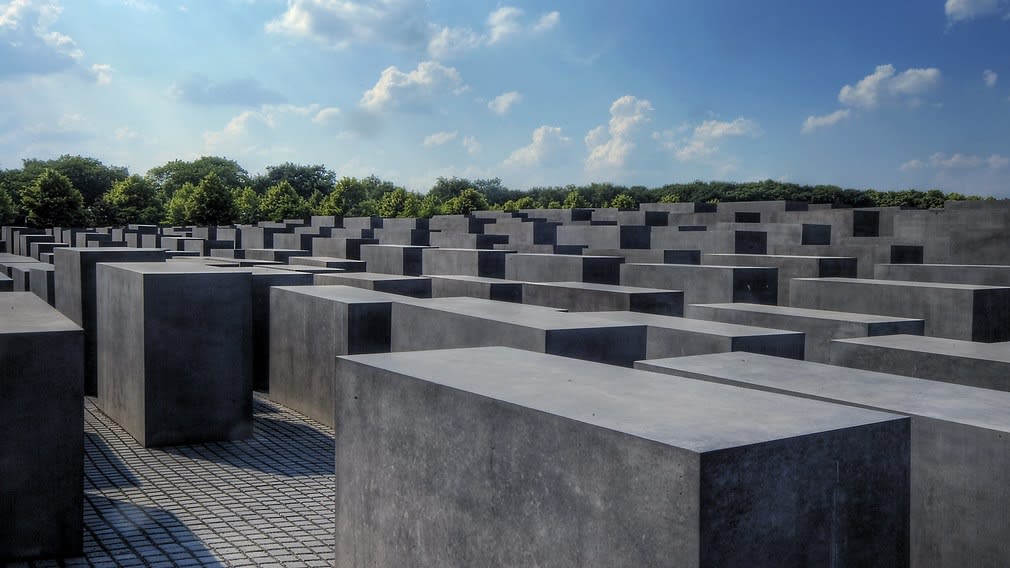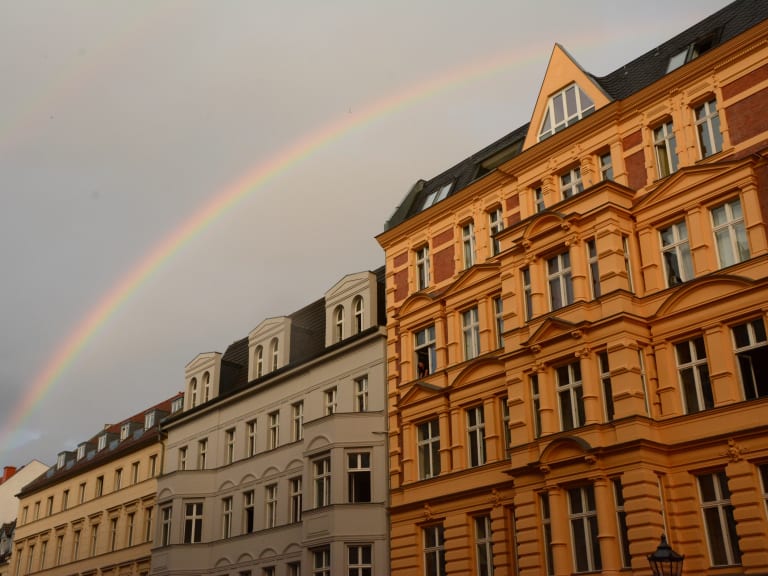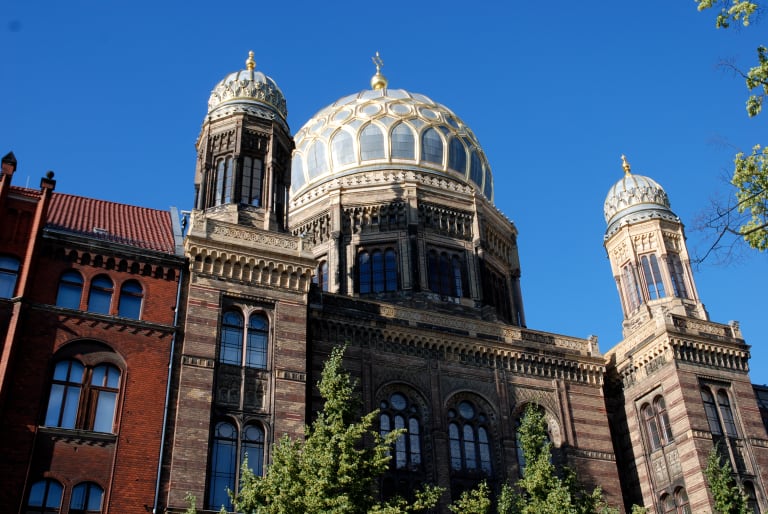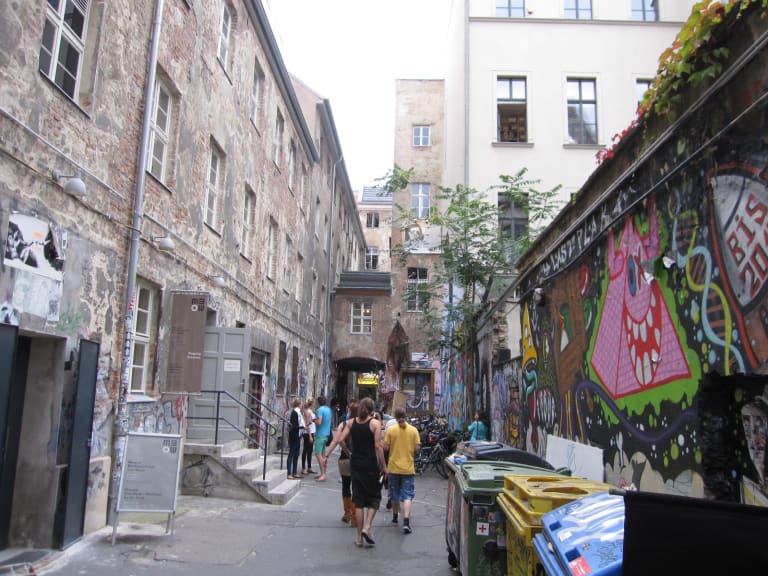Things to Do in Berlin Jewish Quarter
Take a tour of Berlin's famous Jewish quarter and learn more about the history of the city and its different nuances.

Memorial to the Murdered Jews of Europe | ©Wolfgang Staudt
Berlin's Jewish Quarter is one of the most important places in the history of 20th century Europe. In recent times, thanks to the Netflix series Unorthodox, we have learned a bit more about Jewish culture and norms. Add to this the traces of World War II in this enclave and you have a very interesting journey.
The city of Berlin is full of contrasts and if you are deciding what to see in Berlin on your next holiday, don't hesitate to include a visit to the Jewish Quarter in your itinerary. I'll tell you all you need to know here. Will you join me?
1. Take a guided tour of the Jewish Quarter

Of all the guided tours you can take in Berlin, the Jewish Quarter tour is the best way to get to know this part of the city and understand more about Berlin.
It's likely that in a city so full of history and attractions to visit, it's a bit confusing to organise your itinerary. If you take a guided tour you won't have to worry about that, as your tour will be specially designed to cover everything you need to see and know about one of Berlin's best neighbourhoods
The tour will be conducted in English by an expert guide who will tell you about the history of World War II and the Cold War, and how all these events have impacted the city we can enjoy today. I highly recommend it because it is extremely interesting.
The tours last about 3 hours and the price starts from 17€, including transfers. The groups are around 10 people, so you will have the space to clarify all your doubts and ask all the questions you need about the exciting history of the city.
2. Discover Berlin's New Synagogue

The Berlin New Synagogue is one of the most important sites to see in Berlin's Jewish Quarter. It is very popular as it survived the Night of Broken Glass, a night of Nazi attacks on all Jewish heritage in the city of Berlin in 1938.
It is said to be the 'new' one, because it was built from the remains of the previous synagogue. For example, its beautiful dome and characteristic symbolic façade are part of the old building.
The synagogue hosts many exhibitions and events, so don't hesitate to check its website before planning your visit. There is also a permanent exhibition with photographs, documents and much more to help you better understand the history of the building and the community in general. It's a must-see in the city of Berlin; don't miss it.
Interesting facts
- Location: Oranienburger Str. 28-30, 10178 Berlin, Germany
- Opening hours: From April to September, Monday to Sunday from 10am to 6pm and from October to March, Sunday to Thursday from 10am to 6pm and Fridays until 3pm. Closed all year round on Saturdays.
- Admission: 7€.
3. Walk through the Hackesche Höfe Courtyards

The 8 courtyards of Hackesche Höfe are among the most curious and picturesque places to visit in Berlin's Jewish quarter. They were built in the early 20th century between several modernist housing and office blocks and are the largest group of enclosed courtyards in Germany.
Today they look a little different than they did back then, with all kinds of shops and cafés, art galleries and restaurants. Although you'll see a lot of tourism in the area, it's one of Berliners' favourite places to end the day or to meet up on weekends.
You can find them very close to the Hackescher Markt S-Bahn station, next to Hackescher Markt square, a place with a lively atmosphere and ideal for taking a break from your day of sightseeing and taking pictures.
4. Don't miss the Otto Weidt Museum

While you're touring the Hackesche Höfe Courtyards, you can pay a visit to the Otto Weidt Museum, one of the most worthwhile places to visit in the Jewish Quarter.
This museum used to be a broom and brush factory, where Otto Weidt employed many Jews who managed to escape deportation. These products went directly to the government, so it was an essential work that could not be interrupted.
The exhibition is extremely moving and traces the story of this well-known entrepreneur and other silent heroes who found a way to help so many citizens. Definitely one of the best museums to visit in Berlin.
Interesting facts
- Location: Rosenthaler Str. 39, 10178 Berlin, Germany
- Hours: Monday to Sunday from 10am to 6pm
- Admission: free of charge
5. Be amazed at the Anne Frank Centre

If you have read The Diary of Anne Frank, you probably want to know more about the life of this little girl. And if you haven't read it yet, this is a good opportunity to find out all about her story at the Anne Frank Centre in Berlin.
The exhibition consists of a series of original objects that were part of Anne's life, including a complete copy of her original diary and some photographs of her childhood. It is an interactive exhibition where you can take your audio guide in English and immerse yourself completely in this era.
Interesting facts
.
- Location: Rosenthaler Str. 39, 10178 Berlin, Germany
- Opening hours: Tuesday to Sunday from 10am to 6pm
- Admission: 7€.
6. Learn much more about the community at the Jewish Cemetery Berlin

The history of the Old Jewish Cemetery in Berlin is truly impressive and a must-see during your stay in Berlin.
The cemetery began to function in 1671, and was allocated to Jewish families living in the area. In 1943, during the Nazi regime, the cemetery was looted and, as a consequence, the tombstones were destroyed and the bones scattered in places that are still unknown.
Nowadays, you can visit the cemetery and learn much more about this history thanks to the information panels distributed throughout the site. But you will no longer find any tombs or mausoleums; what you can see are the statues at the entrance in commemoration of those who rest there.
Berlin Jewish Cemetery
.
- Location: Schönhauser Allee 22, 10178 Berlin, Germany
- Opening hours: Monday to Thursday 8am to 4pm and Friday 7.30am to 1pm.
7. Get to know Rosenstrass Square

This square is famous for having been the site of the massive Rosenstraße protests between February and March 1943. These protests were carried out by a group of German women fighting for the release of their Jewish husbands, who were imprisoned in a building right in front of the square.
Eventually, the men were freed, and these brave women were remembered forever. You can see the memorial called the Women's Block, which stands in the middle of this square. If you want to know more about this history I recommend the film The House of Roses where you can learn about this time and these historical events reflected to perfection.
If you look closely, in the middle of the square you can also identify the foundations of what used to be a new synagogue under construction, which was destroyed during the war.
8. Find the Stolpersteine Plaques

If you take a walk through Berlin's Jewish quarter and look carefully, you will be able to identify different golden plaques located between the cobblestones of the streets. You will probably wonder what they correspond to or what they mean.
This project, the brainchild of artist Gunter Demnig, is growing day by day with contributions from the families of the victims. Relatives of all Jews deported to concentration camps who know where they originally lived in Berlin can request that a commemorative plaque be placed next to the entrance of that address in the street and be part of this massive open-air tribute.
As you will notice, Berlin's streets are alive and tell their own story. Each golden paving stone contains the name of the person, their place and date of birth and their place and date of death.
9. Explore the Hackescher Markt

Hackescher Markt square was, in ancient times, a swampy and unused site in the city that later became a butcher's market.
The site evolved over time and today it has become a popular square for its great nightlife and large concentration of restaurants and shops of all kinds. You can even find the famous Berlin Hackescher Markt station. It has very good transport connections to the rest of the city.
If you're lucky enough, you might even find somestreet performers playing music and livening up the atmosphere.
10. Visit the Holocaust Memorial

Although this monument is not located in the Jewish Quarter, it is well worth a visit and completes your tour of the Jewish Quarter and its culture. You've probably seen a picture of it on the internet, or maybe you know someone who has visited it. But that has nothing to do with experiencing it for yourself.
Located near the Brandenburg Gate, on the former site of the Berlin Wall, the Memorial to the Murdered Jews of Europe covers about 2 hectares. It consists of 2711 grid-shaped concrete blocks in tribute to the victims of the Holocaust period.
Walking among the blocks will make you feel confused and lonely, and that is the feeling that Peter Eisenman, the artist, wanted to capture when he thought of this work. His aim was to emulate the feelings felt by the millions of people deported to the concentration camps.
- Address: Cora-Berliner-Straße 1, 10117 Berlin, Germany
- Opening hours: Tuesday to Sunday from 10am to 6pm
- Admission: free of charge
Where to eat in Berlin's Jewish Quarter?

Although you can find all kinds of places to eat, the Jewish quarter can be a good opportunity to try new flavours and typical dishes of Eastern European Jewish cuisine.
Here is a small list of some of my favourite places:
- Beth Café: this is a place where you can feel like you are inside a Jewish house and have a very good coffee. Located in Tucholskystraße 40, very close to the Synagogue.
- Kopps: At 94 Linienstraße St., vegans also have a place to try new flavours. Its cuisine is so original that even carnivores will want to come back.
- Sawade: it's always a good time to eat something sweet, and this place is perfect for you to follow your instinct. This chocolate shop is one of the oldest in Berlin, and is located here in the heart of the Jewish quarter, in Rosenthaler Str. 40. You can choose from a wide selection of chocolates and truffles.
